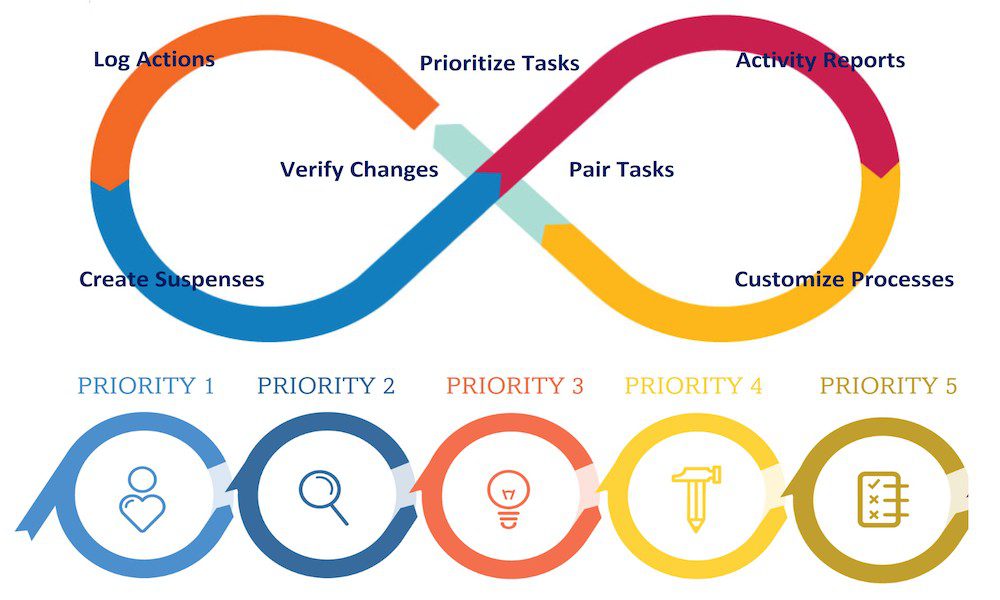
When I first started using Hawksoft back in 2012 as a CSR, I was a team of one with no set process for how to attack my workload each day. Sometimes requests for changes and quotes came in so fast that before I could hang up the phone and make a log entry, I had three more calls and 5 emails waiting for responses.
When we added new members to our team it became obvious that we had to have some common methodology. By creating a standardized procedure that everyone followed, we became more efficient and spent less time asking for clarification. Over time we built and tested and refined this process, but the basics remain true. Here are the rules that our Account Managers, CSRs and Advisors live by today.
Include an action item in each log note
We start each log note by writing the next action that must be taken in the process. This way the person who receives the suspense knows exactly what to do. The action item is then followed by details of what started the process. It might be notes from the call with a client or an email copied into the log, but the ACTION item details what needs to be done to complete this request. Here’s an example of what the log note might look like:
ACTION: Remove the 2018 BMW from the auto policy effective 03/01/2023. Betty called today and said that she is selling her 2018 BMW as of this morning. There is no replacement vehicle currently.
Create a suspense for each element of the action item
If there are multiple changes to be made on the file, we create a suspense for each policy, and sometimes each task depending on whether they can be processed at the same time or need to be processed in a sequence. In the above example, if we needed to remove the BMW from the auto policy and the umbrella policy, there would be two log notes/suspenses: one on the auto tab and one on the umbrella.
By breaking the needed action into small bite-sized tasks it becomes much easier to complete one element of the action item, close out that suspense, and then create the next action item in the process. Doing this means that if an Account Manager is interrupted by a phone call or email mid-process, they don’t have to try to remember exactly what they have and haven’t done in a multi-step process.
Write every suspense as if you are suspending it to someone else
We found that if we only wrote suspense to ourselves, it was often hard to interpret the details if someone was out sick. Now we require staff to write log notes so that anyone can read and understand the next action that needs to be taken. We do use shorthand sometimes, but again, we make sure our staff has a common vocabulary.
Verify every policy change for accuracy to avoid E&O risks
Typically, an online change to a policy can be verified as complete via download the day after the change has been made. After completing an action, we create a verification suspense so that the details are reviewed the next day against the download that was received. If the change doesn’t generate the download, then we would verify against the information on the carrier website.
Use a system to prioritize tasks
By following this standardized process, our agency found that most of our actions fell into one of five priorities, and we use these “buckets” to manage the tasks we have at hand based on the type of task and level of complexity. You may want to customize these for your agency, but here are the priorities we use.
Priority 5
These are items that are auto assigned to our Account Managers through specific settings that are customizable in HawkSoft. Our team receives a suspense for any Cancellation Downloads and Renewal Downloads with uprates of more than 10%.
Priority 4
These are verifications. We create a suspense and identify it as a verification for any changes that we made on the client policies and when we issue new policies to verify that they were issued as requested.
Priority 3
These are follow-ups. Any time we need to follow up with a carrier, client, advisor, mortgage company, etc. we use this priority to indicate that we are missing information to complete a task and we need to make a call or send an email to get additional details before completing an action.
Priority 2
These are processing requests or change quotes that need to be completed. If you are identifying an action as a 2 it means you have all the information you need to complete the task, you just need to go to the carrier and complete the process.
Priority 1
This is a bigger bucket by design that contains several items, allowing account managers to only need to be aware of the suspenses in this bucket.
- Anything suspended to you by someone else
If you are given a suspense to process something by someone else, when you go through your 1’s you would resuspend this into its proper priority bucket. This prevents a CSR from missing a task that might be time sensitive. - Anything that is time sensitive and due today
We use categories to identify time sensitive items as URGENT so that we know they will be completed on the same day. - Proposals that need to be reviewed and offered to clients
These are more time-consuming tasks that require the account managers and advisors to potentially set appointments and create other documentation, make corrections, and prepare items for the sales process. - New policies that need to be issued
We have additional processes that lay out what needs to happen when new policies are issued and this process can take up to an hour to issue and lay out, so Account Managers can manage their time and balance their workload by calling these items out through categories.
Our staff works these numbers backwards throughout the day, moving tasks higher in priority as they work on them. They will start with their 5s in the morning and move through the list. When they are doing their 4s, if there is an item that can’t be verified, rather than stopping what they are doing to call the carrier or check the website, they close out the task and suspend it as a 3 to follow up with the carrier on any issues. When they work on their 3s, if they connect with a client or UW and now have the information that they need to complete the task, they close out the task and create a new action as a 2 to process the change.
Using this methodology, our team can close out many actions by noon each day. When I was an Account Manager, I regularly closed out 60-70 suspenses each day using this process. In the afternoons, staff can spend time on the items that require more thought and decision-making skills.
Complete similar tasks together
To speed up processing even further, we apply standard categories within each of our priority buckets:
- Priority 5: Cancellations, Uprates
- Priority 4: Verify
- Priority 3: Call Client, Call Carrier, Call Leinholder, Call Other, Email Client, Email Carrier, Reminder
- Priority 2: Process, Quote
- Priority 1: URGENT, Offer, Review, Issue
By using the categories to further detail the action that needs to be taken, the staff can group tasks in their suspense list to complete these items more efficiently. For instance, if I have 6 items to process and I can see that 3 of those items are with the same carrier, I can sort my suspense list and log into the carrier and tackle those 3 changes without having to log in and out and jump between carriers.
In my follow ups, if I have 6 calls that need to be made, 3 of which to the same carrier, again I can group them together and call the underwriter and ask them about all 3 of my questions with one phone call instead of one at a time. With emails I may have 3 very similar emails to send to customers, following up on a request for additional information. I may even be able to type the email once, copying and making slight changes for each client as I go along. Besides making processing more efficient by grouping similar tasks, it also uses less brain power as the employee doesn’t have to reset their brain and rethink the process that they need to follow each time they have a suspense.
Use Activity Reports to track progress
Agency managers can get more insight into who is effective in their position and who is struggling. You can use the Activity Report to gain understanding into how much processing an employee might or might not be doing compared to others, and when you look at their suspense list you can instantly see what their workload looks like and have a better idea of how to help them manage their time efficiently.
Customize your process for your agency
While our methodology might not fit the needs of your agency exactly, you can use this as a blueprint to customize processes within HawkSoft for your staff. This makes training and learning the HawkSoft system easier, teaches employees who are tackling processing how to be more efficient with their time, protects you from E&O risks, and guarantees that if an employee is out, someone else can pick up where they left off.
Blog Author:
Kelsi Rakevet
Director of Operations
Kaplan Insurance Agency
Plymouth, Minnesota


